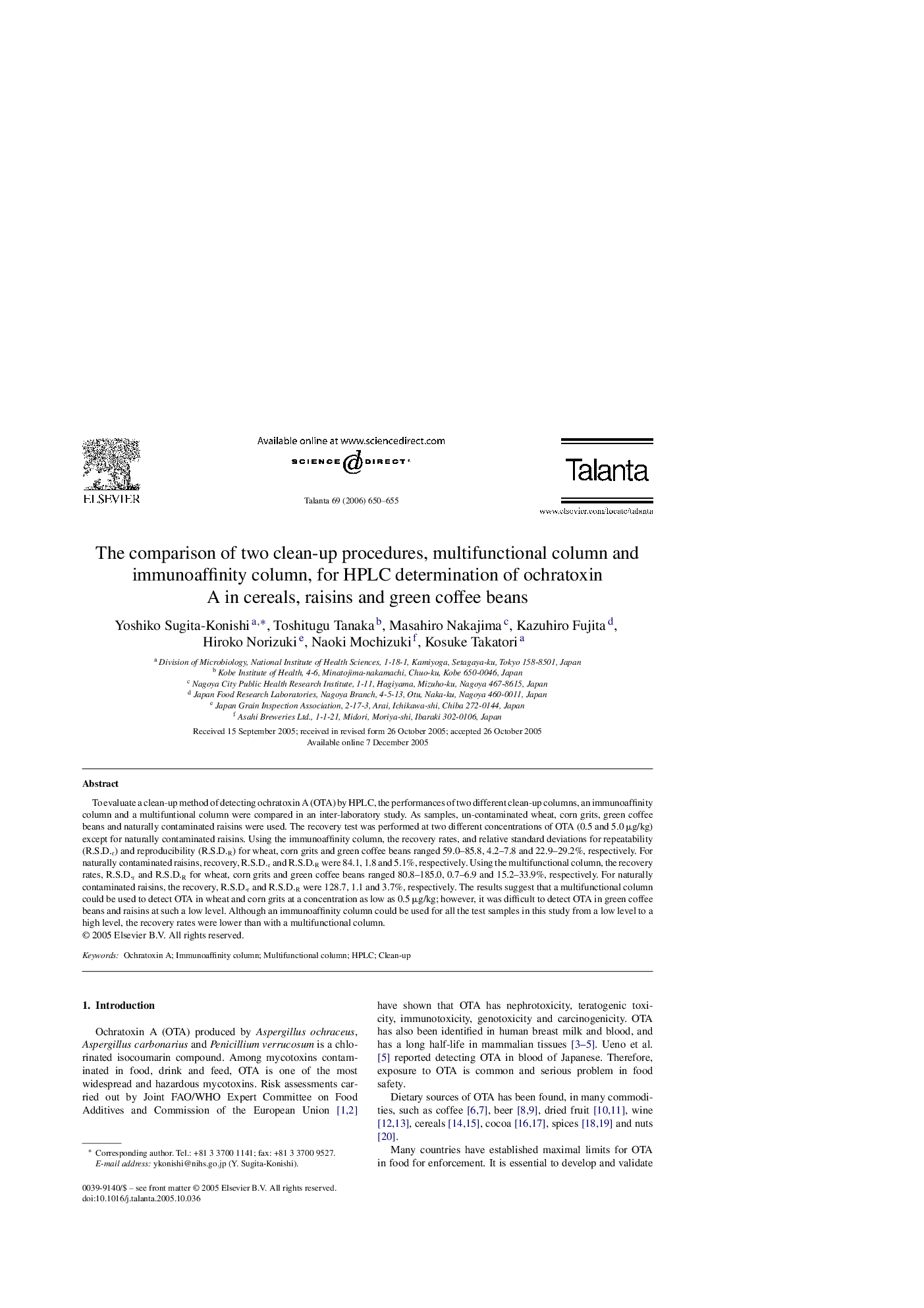| Article ID | Journal | Published Year | Pages | File Type |
|---|---|---|---|---|
| 1247294 | Talanta | 2006 | 6 Pages |
To evaluate a clean-up method of detecting ochratoxin A (OTA) by HPLC, the performances of two different clean-up columns, an immunoaffinity column and a multifuntional column were compared in an inter-laboratory study. As samples, un-contaminated wheat, corn grits, green coffee beans and naturally contaminated raisins were used. The recovery test was performed at two different concentrations of OTA (0.5 and 5.0 μg/kg) except for naturally contaminated raisins. Using the immunoaffinity column, the recovery rates, and relative standard deviations for repeatability (R.S.D.r) and reproducibility (R.S.D.R) for wheat, corn grits and green coffee beans ranged 59.0–85.8, 4.2–7.8 and 22.9–29.2%, respectively. For naturally contaminated raisins, recovery, R.S.D.r and R.S.D.R were 84.1, 1.8 and 5.1%, respectively. Using the multifunctional column, the recovery rates, R.S.D.r and R.S.D.R for wheat, corn grits and green coffee beans ranged 80.8–185.0, 0.7–6.9 and 15.2–33.9%, respectively. For naturally contaminated raisins, the recovery, R.S.D.r and R.S.D.R were 128.7, 1.1 and 3.7%, respectively. The results suggest that a multifunctional column could be used to detect OTA in wheat and corn grits at a concentration as low as 0.5 μg/kg; however, it was difficult to detect OTA in green coffee beans and raisins at such a low level. Although an immunoaffinity column could be used for all the test samples in this study from a low level to a high level, the recovery rates were lower than with a multifunctional column.
